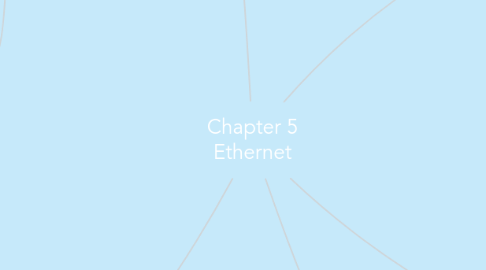
1. LAN switches
1.1. The MAC Address Table
1.1.1. A Layer 2 Ethernet switch uses MAC addresses to make forwarding decisions. It is completely unaware of the protocol being carried in the data portion of the frame, such as an IPv4 packet. The switch makes its forwarding decisions based only on the Layer 2 Ethernet MAC addresses.
1.2. Switch Forwading Methods
1.2.1. witches use one of the following forwarding methods for switching data between network ports: Store-and-forward switching Cut-through switching Figure 1 highlights differences between these two methods. In store-and-forward switching, when the switch receives the frame, it stores the data in buffers until the complete frame has been received. During the storage process, the switch analyzes the frame for information about its destination. In this process, the switch also performs an error check using the Cyclic Redundancy Check (CRC) trailer portion of the Ethernet frame.
1.3. Switch Port Settings
1.3.1. wo of the most basic settings on a switch are the bandwidth and duplex settings for each individual switch port. It is critical that the duplex and bandwidth settings match between the switch port and the connected devices, such as a computer or another switch. There are two types of duplex settings used for communications on an Ethernet network: half duplex and full duplex.
2. Address Resolution Protocol
2.1. MAC and IP
2.1.1. There are two primary addresses assigned to a device on an Ethernet LAN: Physical address (the MAC address) – Used for Ethernet NIC to Ethernet NIC communications on the same network. Logical address (the IP address) – Used to send the packet from the original source to the final destination.
2.2. ARP
2.2.1. Recall that every device with an IP address on an Ethernet network also has an Ethernet MAC address. When a device sends an Ethernet frame, it contains these two addresses: Destination MAC address - The MAC address of the Ethernet NIC, which will be either the MAC address of the final destination device or the router. Source MAC address - The MAC address of the sender’s Ethernet NIC.
2.3. ARP Issues
2.3.1. As a broadcast frame, an ARP request is received and processed by every device on the local network. On a typical business network, these broadcasts would probably have minimal impact on network performance. However, if a large number of devices were to be powered up and all start accessing network services at the same time, there could be some reduction in performance for a short period of time, as shown in the figure. After the devices send out the initial ARP broadcasts and have learned the necessary MAC addresses, any impact on the network will be minimized.
3. introduction
3.1. Ethernet is now the predominant LAN technology in the world. Ethernet operates in the data link layer and the physical layer. The Ethernet protocol standards define many aspects of network communication including frame format, frame size, timing, and encoding. When messages are sent between hosts on an Ethernet network, the hosts format the messages into the frame layout that is specified by the standards.
4. Ethernet protocol
4.1. Ethernet Frame
4.1.1. Ethernet operates in the data link layer and the physical layer. It is a family of networking technologies that are defined in the IEEE 802.2 and 802.3 standards
4.2. Ethernet MAC Address
4.2.1. An Ethernet MAC address is a 48-bit binary value expressed as 12 hexadecimal digits (4 bits per hexadecimal digit). Just as decimal is a base ten number system, hexadecimal is a base sixteen system. The base sixteen number system uses the numbers 0 to 9 and the letters A to F. Figure 1 shows the equivalent decimal and hexadecimal values for binary 0000 to 1111. It is easier to express a value as a single hexadecimal digit than as four binary bits.

